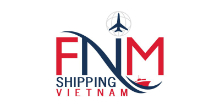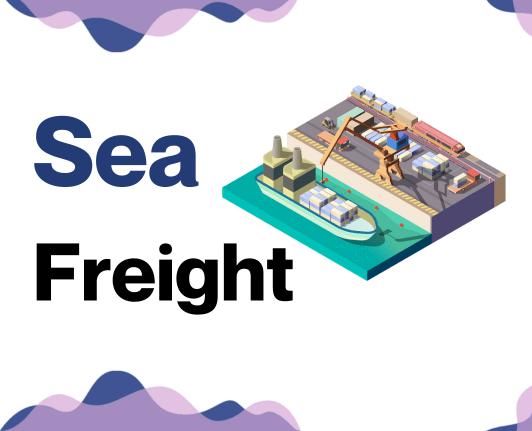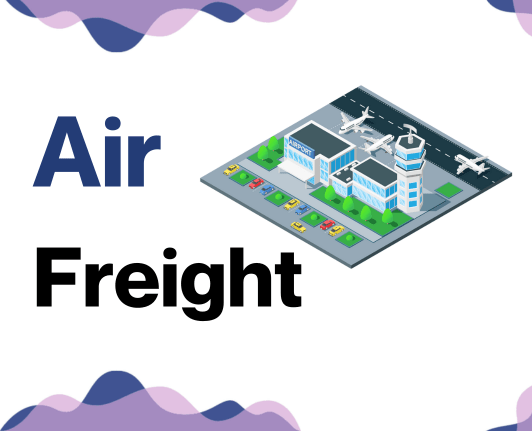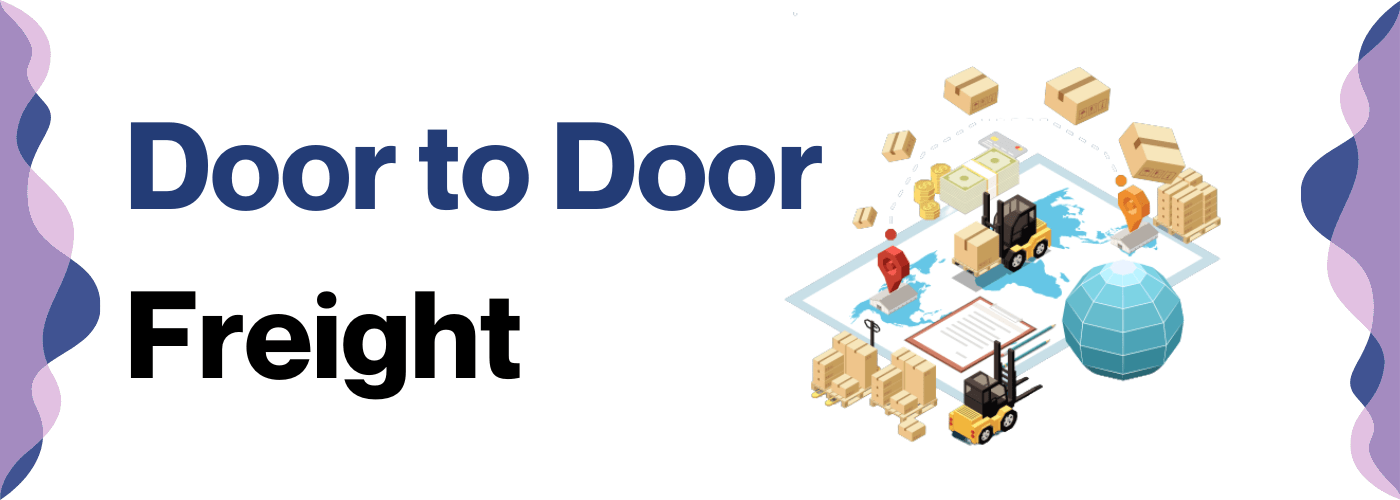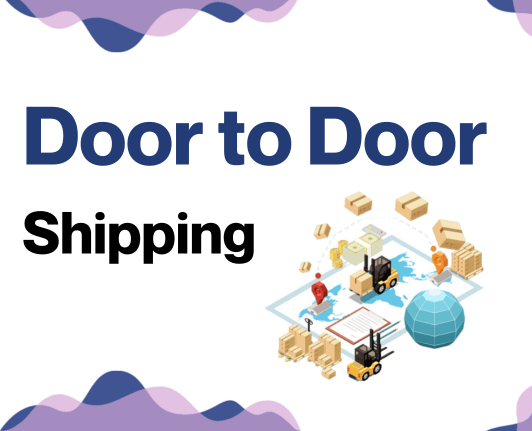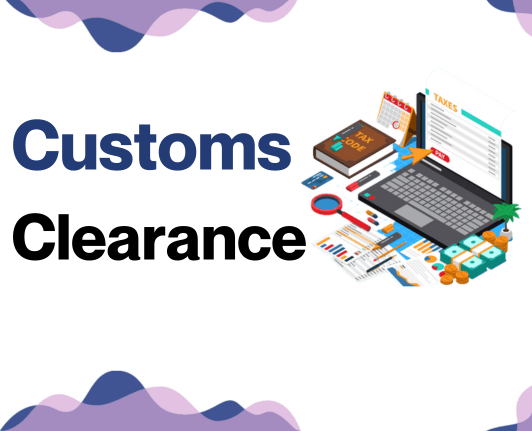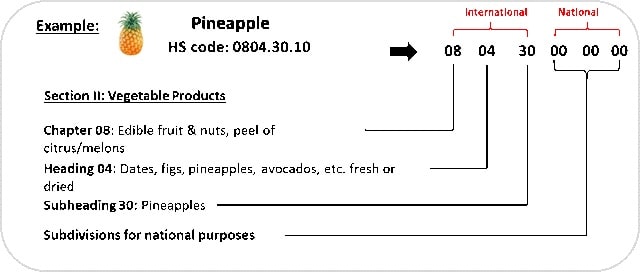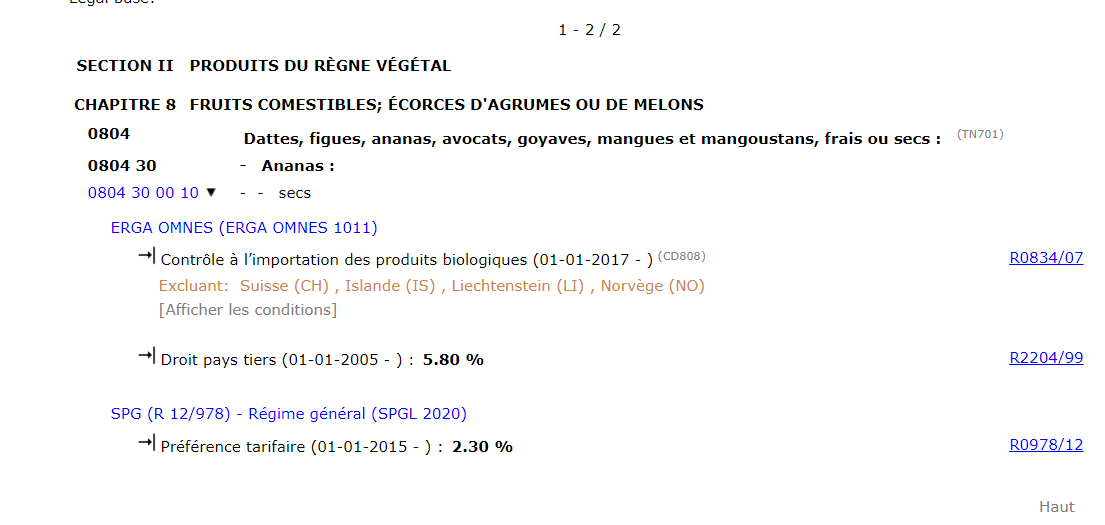Did you hear about the Vietnamese freight forwarding turtle? He beat the hare but missed the cargo boat! All humor aside, businesses face significant pain points in understanding rates, transit times, and customs regulations when shipping goods from Vietnam to Luxembourg. This comprehensive guide aims to address these hardships, detailing various freight options such as air, sea, road, & rail, along with deep-diving into customs clearance, duties, taxes, and regulations. We tailor the information specifically for businesses, providing usable, practical advice to enable seamless shipping operations. If the process still feels overwhelming, let FNM Vietnam handle it for you! As an international freight forwarder, we take care of each step to morph your shipping challenges into unmistakable business success.
Which are the different modes of transportation between Vietnam and Luxembourg?
Shipping between Vietnam's rice fields and Luxembourg's steel mills? The choice of transport isn't just A to B, it's a puzzle of distance and borders. Imagine a plane darting straight over countries, while a truck would have to zigzag through them, like a maze. So, will it be the swift air cargo or the tireless ground transport? Could sea freight, sailing around continents, be your winning ticket? This isn't just about fast or slow - it's about aligning with your shipping needs and dealing with trade's little speed bumps. Let's unpack the options.
How can FNM Vietnam help?
Looking to ship goods from Vietnam to Luxembourg? Let FNM Vietnam streamline your process. We handle everything from customs to transport, ensuring a hassle-free journey for your cargo. Want more information or a free estimate within 24 hours? Get in touch with our consultants today.
FNM Vietnam Tip: Sea freight might be the best solution for you if:
- You're moving big loads or large items. Sea freight offers roomy, cost-effective solutions.
- Your shipment isn't time-critical. Ocean routes take longer but are often more reliable.
- Your supply chain links major ports, tapping into a broad network of sea lanes.
Sea freight between Vietnam and Luxembourg
The connection between Vietnam and Luxembourg, though distant in miles, is brought closer through the dynamic world of ocean shipping. As trade companions, both countries have recognized the strategic importance of their respective ports, establishing strong links between key Vietnamese seaports like Hải Phòng and Cái Mép and the cargo port of Luxembourg, Mertert. Sea freight stands tall as the optimal choice for companies dealing in high-volume goods; it’s the most pocket-friendly option, though patience is needed considering sea transport is the slowest method.
However, the oceanic journey from Vietnam to Luxembourg isn't always smooth sailing. Many shippers and businesses often hit turbulent waters, grappling with confusing procedures, customs nightmares, and avoidable mistakes. It's like trying to assemble a ship-in-a-bottle without instructions: frustrating, time-consuming, and error-prone. But take heart! This section sails through the complexities, shedding light on best practices and specific details that can streamline your freight experience, much like having an expert shipwright at your side. Armed with these insights, you'll navigate the shipping process like a seasoned sea captain. Smooth sailing ahead!
Main shipping ports in Vietnam
Port of Hai Phong
Location and Volume: Located in northern Vietnam, the port of Hai Phong is a gateway to major cities and regions like Hanoi and Red River Delta, with a shipping volume of over 100 million tons per year.
Key Trading Partners and Strategic Importance: The port primarily serves as a hub for trading between Vietnam and its key partners including China, South Korea, and the United States. Hai Phong port is particularly known for its handling of container cargo.
Context for Businesses: If you're looking to tap into the markets of northern Vietnam or ship goods to Far East Asia and beyond, the Port of Hai Phong’s extensive capacity and strategic location make it an integral part of your shipping solution.
Port of Da Nang
Location and Volume: Positioned centrally on Vietnam's east coast, Da Nang Port serves as a critical connection for the central and western regions, processing more than 8 million tons of cargo annually.
Key Trading Partners and Strategic Importance: With strong trade links to neighboring countries, such as Laos and Thailand, Da Nang Port serves as a strategic gateway to the ASEAN market. Additionally, it's the largest port in central Vietnam.
Context for Businesses: If you're interested in targeting the Southeast Asian markets, prioritizing Port of Da Nang in your strategy could provide you with significant advantages due to its comprehensive logistics solutions and location.
Port of Cai Mep
Location and Volume: Situated in southern Vietnam and close to Ho Chi Minh City, Cai Mep Port is a prominent container port with a volume of nearly 2 million TEU per annum.
Key Trading Partners and Strategic Importance: The port is a major channel for trade with various international partners, particularly those in Europe and North America. It’s one of the only ports in Vietnam that can accommodate large, deep-water vessels.
Context for Businesses: Looking to send large quantities, particularly via larger vessels? Port of Cai Mep’s capability to handle deep-water vessels and large cargoes ideally positions it within your global logistics strategy.
Port of Saigon
Location and Volume: Located in southern Vietnam, the Port of Saigon is one of the busiest ports in the country, offering extensive services in container, bulk, and liquid cargo and handling more than 4 million TEU annually.
Key Trading Partners and Strategic Importance: Saigon Port serves as an integral linchpin for international commerce, facilitating substantial trade with countries including China, South Korea, and the U.S.
Context for Businesses: If high volumes and versatility in goods are major aspects of your business, Saigon Port’s capabilities and reputation for handling various types of cargo could make it indispensable to your strategy.
Port of Cam Ranh
Location and Volume: Positioned along Vietnam's south-central coast, Port of Cam Ranh is a significant port for bulk and containerized cargo handling around 2 million tons per year.
Key Trading Partners and Strategic Importance: It's a notable hub for regional trade, particularly with Indonesia, Malaysia, and Singapore, and plays a strategic role in Vietnam’s plans to enhance its maritime capabilities.
Context for Businesses: If Indonesia, Malaysia, and Singapore are in your business sights, Port of Cam Ranh’s strategic regional position and planned port upgrades could prove optimal for your logistics and expansion.
Port of Quy Nhon
Location and Volume: Located in central Vietnam, the Port of Quy Nhon handles around 4.5 million tons of cargo every year.
Key Trading Partners and Strategic Importance: The port plays a crucial role in bolstering trading connectivity with regional partners, including Laos, Cambodia, and Thailand.
Context for Businesses: Should you be planning to expand your trade scope in Indochina, Port of Quy Nhon, with its admirable throughput and strategic location, could be an essential part of your growth strategy.
Main shipping ports in Luxembourg
Port of Luxeport
Location and Volume: Situated in the city of Luxembourg, Luxeport serves as the principled air freight port for the country, considering landlocked situation of Luxembourg. Critical for import and export, Luxeport handles around 897,000 tons of cargo a year.
Key Trading Partners and Strategic Importance: Luxeport greatly serves the European economy and shares prominent trade partnerships with Germany, France, and Belgium. Its importance lies in its well-built logistics eco-system and the strategic integration with the Luxembourg Findel Airport, forming a unique airport city concept.
Context for Businesses: If your business is looking to penetrate the European market, especially reaching to landlocked areas, Luxeport might be a crucial aspect of your shipping strategy due to its comprehensive set-up and integration with other modes of transport.
Port of Mertert
Location and Volume: Located in the eastern region of Luxembourg along the Moselle river, the Port of Mertert is the primary river port of the country. It has a total handling capacity of up to 2 million tons of goods annually.
Key Trading Partners and Strategic Importance: The port plays an essential role in the trade activities between Luxembourg and its neighboring countries including Germany and France. The port’s strategic importance is grounded in its unique positioning as a multi-modal platform combining river, road, and rail freight transport.
Context for Businesses: If your enterprise aims to transport heavy, bulk cargos with a higher payload, exploring the Port of Mertert could be a game-changer in your logistics planning due to its multi-modal connectivity and adapted infrastructure.
Should I choose FCL or LCL when shipping between Vietnam and Luxembourg?
Opting for either Full Container Load (FCL) or Less than Container Load (LCL), popularly known as consolidation, can make or break your shipping success between Vietnam and Luxembourg. This pivotal decision not only affects your budget but also the delivery timeline. Coming up next, we'll dissect each option's pros and cons to empower you with the knowledge to make a strategic choice that effectively serves your unique shipping needs. Ready to dive in and seize control over your shipping strategy? Stay tuned!
LCL: Less than Container Load
Definition: LCL, an acronym for Less-Than Container Load, signifies shipping goods via sea freight when your cargo does not fill the full container. It's a cost-effective and flexible option for low-volume shipments.
When to Use: Choose LCL when your goods' total volume falls under 13-15 CBM (Cubic Meters). This alternative prevents the need to pay for empty space in a full container load and allows for flexible shipping schedules, as you're not tied to filling an entire container before shipment.
Example: Consider a Vietnam-based furniture manufacturer who needs to send just 10 CBM worth of product to a client in Luxembourg. Instead of waiting to produce and pack more chairs to fill a container or paying for unused space, they'd opt for LCL shipment.
Cost Implications: LCL freight involves cost-sharing, meaning you pay only for the space your cargo occupies in the shared container, making it an affordable choice for smaller businesses or low-volume products. However, it might require additional steps like freight consolidation and de-consolidation, which will involve additional processing and handling fees. These cost considerations are offered upfront in your LCL shipping quote.
FCL: Full Container Load
Definition: FCL, or Full Container Load, refers to a shipping method where an entire container is solely utilized for one consignment. The advantage lies in its cost-effectiveness for large volumes and added security, as the container remains sealed from the origin to the destination.
When to Use: If your cargo is over 13/14/15 CBM - often equating to a half or more of either a 20'ft or 40'ft container - FCL shipping becomes preferable. It's more cost-effective than LCL, or Less than Container Load, for such volumes and safer as the container remains unopened en route.
Example: Imagine a furniture maker in Vietnam shipping multiple large items to a store in Luxembourg. Since the combined volume of products exceeds the 15 CBM benchmark, an FCL container is chosen. This secures the products from tampering during transit, ensuring their safe arrival.
Cost Implications: Although the up-front FCL shipping quote may be more than LCL, the cost per unit is typically lower when dealing with larger volumes. So, while your initial investment may be higher, economies of scale tip the financials in favor of FCL when transporting a substantial volume.
Say goodbye to shipping headaches!
At FNM Vietnam, we aim to streamline the complex process of cargo shipping. Our team of ocean freight experts are well-versed in helping businesses decide between consolidation and full container options based on factors such as cost, time, and goods nature. We make the choice simple, guiding you through all the intricacies. Ready to take the guesswork out of your shipping process? Contact us today for a free estimation of your next cargo shipment from Vietnam to Luxembourg.
How long does sea freight take between Vietnam and Luxembourg?
Sea freight between Vietnam and Luxembourg typically takes between 26 to 33 days on average; however, it's worth mentioning that transit times are subject to a range of factors. These factors include the specific ports of departure and arrival, the weight of the shipment, and the nature of the goods you're shipping. To get a more accurate estimate tailored to your particular shipment details, we highly advise contacting a freight forwarding expert, such as FNM Vietnam.
To give you a more concrete understanding of average sea freight transit times, below is a text-only table showing the estimated times it takes a shipment to travel between the main freight ports in Vietnam and Luxembourg:
| Departure Port (Vietnam) | Arrival Port (Luxembourg) | Average Transit Time (Days) |
| Haiphong | Dudelange | 38 days |
| HỒ Chí Minh City | Bettembourg | 41 days |
| Đà Nẵng | Dudelange | 34 days |
| Quy Nhơn | Bettembourg | 34 days |
*Note: Please remember that the times provided here are averages and should be used as guidance only. For more precise transit times, reach out to your preferred freight forwarding partner.
How much does it cost to ship a container between Vietnam and Luxembourg?
Determining the shipping cost from Vietnam to Luxembourg comprises several variables, making it challenging to provide an exact figure upfront. Variable factors such as the Point of Loading, unravelling destination specifics, the carrier's profile, the nature of your goods, and ongoing market shifts can significantly influence ocean freight rates. Thus, the price range can be broad when shipping items on a per CBM basis. While it might seem overwhelming, fear not! Our team of freight specialists is here to navigate these intricacies for you. We approach each request uniquely, promising a personalized quote that prioritizes your interests and budget. Rest assured, we're committed to providing you the best possible rates while simplifying the shipping process.
Special transportation services
Out of Gauge (OOG) Container
Definition: OOG containers are specially designed for loads that exceed the dimensions of standard containers.
Suitable for: OOG is ideal for oversized equipment or machinery, structures that cannot be disassembled, or large-scale vehicles.
Examples: Construction equipment, windmill propellers, or large manufacturing machinery.
Why it might be the best choice for you: If your cargo dimensions surpass regular container sizes, an OOG container can effectively ship these loads between Vietnam and Luxembourg without the need for disassembly.
Break Bulk
(BB)
Definition: Break bulk involves shipping goods individually, or in batches, rather than in containers.
Suitable for: If your goods are not in form fit for container load, break bulk is a viable option.
Examples: Pipes, timber, construction materials or other cargo of irregular size and shape.
Why it might be the best choice for you: Break bulk can be cost-effective for larger, loose cargo loads that don't justify the cost of a whole container.
Dry Bulk
Definition: Dry bulk refers to granular products transported in bulk like coal, grain, or minerals.
Suitable for: Commodities that can be shipped without packaging, generally in large quantities.
Examples: Rice, coffee beans from Vietnam, or iron ore.
Why it might be the best choice for you: If you're shipping a large amount of unpackaged goods, dry bulk is typically the most efficient and cost-effective option.
Roll-on/Roll-off (Ro-Ro)
Definition: Ro-Ro vessels are designed to carry wheeled cargo that can be driven or towed on and off the ship.
Suitable for: Cars, trucks, trailers, machinery or any items with wheels.
Examples: Vehicles produced in Vietnam, agricultural machinery, or mobile cranes.
Why it might be the best choice for you: If your cargo is self-motile or towable, Ro-Ro allows an easy on and off the vessel, reducing handling costs.
Reefer Containers
Definition: Reefer containers are refrigerated containers used to transport temperature-sensitive cargo.
Suitable for: Perishable items that need to remain at certain temperatures during transit.
Examples: Seafood from the Mekong Delta, pharmaceuticals, or fresh fruits.
Why it might be the best choice for you: If maintaining a certain climate for your products in transit is key, reefer containers are your go-to.
Each method has its pros and cons, often dictated by the specifics of your individual cargo. Considering your unique needs, FNM Vietnam is here to assist you in finding the best solution. Contact us for a free shipping quote in less than 24h and let's explore the most efficient and effective shipping strategy for your business.
FNM Vietnam Tip: Air freight might be the best solution for you if:
- You're on a tight schedule. Air freight delivers speed unmatched by other modes.
- Your cargo is under 2 CBM, a good fit for air's smaller capacity.
- Your destination is off the usual routes, making air's global network a key asset.
Air freight between Vietnam and Luxembourg
Fast and reliable; two words to aptly describe air freight between Vietnam and Luxembourg. Does your business deal with small, high-value goods like electronics or pharmaceuticals? If so, air freight is your pal. It might seem a tad pricey, but for lightweight and valuable items, it's actually a cost-saver. Sounds appealing, right?
But here’s the rub. Are you acquainted with the distinct 'chargeable weight' concept used to calculate air freight costs? Or how about other lesser-known industry practices? Lapses in these areas can turn your budget upside down faster than a turbulence on a flight. Our guide will help you become savvy in these aspects, protecting your wallet from taking a hit.
Air Cargo vs Express Air Freight: How should I ship?
Choosing the right mode of air transport for your goods from Vietnam to Luxembourg can prove to be a daunting decision. Simplifying it for you, Air Cargo is akin to a shared ride by multiple business shipments on popular airline routes, while Express Air Freight is your goods' VIP ticket on an exclusive, sped-up journey to their destination. Your business needs, urgency, and budget will determine your best fit. Let's break it down further!
Should I choose Air Cargo between Vietnam and Luxembourg?
As you explore options to ship goods between Vietnam and Luxembourg, consider Air cargo. Catering to different budgetary requirements, it stands out for cost-effectiveness and reliability. Several airlines like Vietnam Airlines and Cargolux provide this service. Do remember that transit times might be longer due to fixed schedules. Notably, air cargo becomes increasingly appealing when you're shipping 100/150 kg (220/330 lbs) or more of cargo. Explore further with Vietnam Airlines and Cargolux.
Should I choose Express Air Freight between Vietnam and Luxembourg?
If you're dealing with cargo under 1 CBM or 100/150 kg (220/330 lbs), you might want to consider Express Air Freight. It's a speedy service offered by renowned international courier firms such as FedEx, UPS, or DHL, dedicated to shipping goods without rush-hour traffic. The advantage? They use cargo planes with zero passengers, leaving more room for your shipment. It's an excellent choice for quick turnaround times, especially for lower-volume goods. A strategically chosen express air freight between Vietnam and Luxembourg can offer you efficient, fast, and reliable service, ensuring timely arrival of your valuable cargo.
Main international airports in Vietnam
Tan Son Nhat International Airport
Cargo Volume: Over 800,000 tons annually
Key Trading Partners: China, Japan, South Korea, USA, Taiwan
Strategic Importance: As the busiest airport in Vietnam, it acts as a critical hub for international export within the country's extensive manufacturing sector.
Notable Features: Tan Son Nhat possesses comprehensive facilities for cargo handling, storage, and related services.
For Your Business: The airport's connectivity and high cargo volume establish a robust network for exporting and importing goods, enabling efficient transport for your product.
Noi Bai International Airport
Cargo Volume: Approximately 700,000 tons annually
Key Trading Partners: China, South Korea, Japan, USA, Taiwan
Strategic Importance: The airport is a central shipping point to northern Vietnam, connecting the country's capital, Hanoi, to other major international trade destinations.
Notable Features: Its state-of-the-art cargo terminal is equipped with modern handling facilities and temperature-controlled storage for sensitive goods.
For Your Business: This airport could be a preferable solution for your Northern Vietnam operations due to its strategic location and advanced handling capabilities.
Cam Ranh International Airport
Cargo Volume: More than 100,000 tons annually
Key Trading Partners: China, Russia, South Korea, Japan, France
Strategic Importance: It plays a significant role in serving the prosperous south-central coast and Central Highlands of Vietnam.
Notable Features: Modern facilities and a focus on building international partnerships
For Your Business: The airport's rapid growth and expansion make it an emerging hub for shipments, presenting a potential growth opportunity for your company.
Da Nang International Airport
Cargo Volume: Over 250,000 tons annually
Key Trading Partners: China, Japan, South Korea, Thailand, Cambodia
Strategic Importance: It is a crucial mid-point air hub linking the north and south of the country and services the economic center of the Central Vietnam region.
Notable Features: The airport has a modern cargo terminal with extensive storage facilities and a variety of freight services.
For Your Business: If your business is working with partners in Central Vietnam, using this airport can provide the most direct and efficient route for your shipments.
Cat Bi International Airport
Cargo Volume: Nearly 20,000 tons annually
Key Trading Partners: China, South Korea, Japan, Malaysia, Thailand
Strategic Importance: Located in Vietnam's northeastern coastal city, Hai Phong, this airport acts as the gate to the sea, which connects the region to international trades.
Notable Features: The airport's location close to the port city of Hai Phong offers a unique competitive advantage for maritime intermodal services.
For Your Business: If your business relies heavily on intermodal transportation, this airport can offer critical strategic advantage due to its proximity to the Hai Phong port.
Main international airports in Luxembourg
Luxembourg Airport
Cargo Volume: Luxembourg Airport, as of 2018, handled over 897,000 tonnes of cargo, making it the 6th busiest cargo airport in Europe.
Key Trading Partners: Its key trading partners include the United States, China, and many European countries like Germany, France, and the UK.
Strategic Importance: Located in the heart of Europe, it serves as an essential hub for international trade in the continent, facilitating fast and efficient transport to major European cities.
Notable Features: With its advanced handling facility that covers 35,000m², the airport caters to a variety of goods. Moreover, it's the home base of Cargolux, the world's largest all-cargo airline.
For Your Business: Due to its extensive cargo volume and strategic location, Luxembourg Airport might be a practical option for your goods transportation needs, especially if your business deals heavily with European and American markets. Its advanced facilities can ensure the secure handling of a wide range of cargo.
How long does air freight take between Vietnam and Luxembourg?
On average, air freight shipping between Vietnam and Luxembourg takes approximately 7 days. Bear in mind, actual transit times may vary. Factors influencing these times include the specific airports involved, the weight of the shipment, and the nature of the goods being transported. For accurate shipping times tailored to your needs, it's best to consult with an expert like FNM Vietnam.
How much does it cost to ship a parcel between Vietnam and Luxembourg with air freight?
Shipping an air freight parcel from Vietnam to Luxembourg costs roughly $4 to $8 per kg - a remarkable range due to factors like proximity to departure and arrival airports, parcel dimensions, weight, and the nature of goods. Therefore, pinpointing a precise rate is challenging. Be assured, our mission at Your Company Name is to get you the best rates, tailoring quotes to your unique needs. Contact us and receive a free quote in less than 24 hours. Our commitment is to partner with your business, navigating you through the complexities of international shipping.
What is the difference between volumetric and gross weight?
Gross weight refers to the complete weight of your shipment, including goods, packaging, and all. On the other hand, volumetric weight, or dimensional weight, is a pricing technique for commercial freight transport which uses an estimated weight calculated from the length, width, and height of a package.
Calculating these weights varies slightly between Air Cargo and Express Air Freight services. For Air Cargo, gross weight is straightforward-it's the actual weight of the item, measured in kilograms. Volumetric weight is calculated as: (Length in cm x Width in cm x Height in cm) / 6000. The result gives you the volumetric weight in kg.
Express Air Freight, on the other hand, uses a slightly different formula for volumetric weight: (Length in cm x Width in cm x Height in cm) / 5000.
For instance, if your shipment is 40cm long, 30cm wide, and 20cm high, weighs 14kg, the volumetric weight would come out as 4 kg for Air Cargo (40x30x20)/6000 and 4.8kg for Express Air Freight (40x30x20)/5000. After converting 14kg and 4.8kg into lbs, we have 30.86 lbs and 10.58 lbs respectively.
Understanding these calculations is integral for businesses because freight charges are calculated on the basis of whichever is higher - the gross weight or the volumetric weight. This allows freight carriers to make efficient use of space, ensuring that the light, bulky items don't occupy more than their fair share.
FNM Vietnam Tip: Door to Door might be the best solution for you if:
- You seek hassle-free shipping. Door-to-door manages the entire process for you.
- You like one go-to contact. A dedicated agent oversees your door-to-door shipment.
- You aim to limit cargo handling. Fewer transitions mean less risk of damage or loss.
Door to door between Vietnam and Luxembourg
Unraveling the mystery of door-to-door shipping, it's an effortless way of moving your goods from Vietnam straight to Luxembourg. This strategy eliminates multiple handling, speeds up shipment time, and simplifies logistics. It makes your business as comfortable as lounging on your couch. Ready to unlock the benefits? Let's dive in.
Overview – Door to Door
Shipping between Vietnam and Luxembourg can be a logistical maze. This is where door-to-door service shines, easing the tedious process, from customs clearance to final mile delivery. It may not be the cheapest option, but clients find its advantages outweigh the costs - you're freed from endless paperwork and scheduling challenges. It's a favorite among our FNM Vietnam clients for its simplicity and stress-free approach. But remember, it's not without drawbacks. Timely deliveries depend on many factors like customs regulations and traffic patterns. In the end, door-to-door shipping could be your stress reliever in the complex world of international logistics.
Why should I use a Door to Door service between Vietnam and Luxembourg?
Juggling logistics between Vietnam and Luxembourg can feel like balancing a bamboo stick on your finger, all while whizzing through a bustling Saigon market! That's where door-to-door shipping service materializes to save your day (and potentially your sanity). Here are five pertinent reasons why choosing this service might just be your knight in shiny armor.
1. Stress-Buster: Door-to-door service takes the logistics burden off your shoulders. From goods pick-up at origin to delivery at your desired destination, every aspect is meticulously handled. So, you can sit back, enjoy a cup of Vietnamese coffee, and focus on your core business operations!
2. Prompt Deliveries: Urgent shipment? No worries! This service is sure to hit the nail on the speedy delivery head, ensuring your cargo reaches Luxembourg right on time.
3. Specialized Handling: Complex cargo can give anyone a headache good enough to match the buzz one gets from bia hơi! Door-to-door services are equipped to handle and deliver even the most intricate consignments safely.
4. Convenience King: Ever dreamt of a shipping service that caters to your specific needs from the first to the last mile? Door to Door is your genie granting this wish. It covers everything, including trucking to your final destination. Talk about a personal concierge!
5. Complete Customization: One size does not fit all in the global shipping landscape. This service offers a tailored shipping solution for your unique business needs, effectively tackling any shipping tribulation that may arise on the journey from Vietnam to Luxembourg.
To sum it up, Door to Door service is like the ultimate stress antidote, the speediest delivery superhero, a master magician for complex cargo handling, your shipping handyman, and most importantly – customizable to the T. No more shipping stress, just shipping success!
FNM Vietnam – Door to Door specialist between Vietnam and Luxembourg
Unlock hassle-free shipping from Vietnam to Luxembourg with FNM Vietnam. We own the end-to-end process, eliminating your stress, from meticulous packing and organized transport to efficient customs clearance across all shipping methods. An expert Account Executive stays at your service. Reach out to us for a complimentary estimate within just 24 hours or dial directly for a free consultation with our shipping professionals. Trust us - we've got you covered!
Customs clearance in Luxembourg for goods imported from Vietnam
Understanding customs clearance is crucial when shipping goods from Vietnam to Luxembourg. It's a complex process - you're navigating a maze that involves taxes, duties, quotas, and licenses. Missteps can lead to unexpected charges and even cause your goods to get stuck in customs. Digging deep into these areas is critical in preparing a comprehensive checklist to avoid these pitfalls. Rest assured, the following sections will help you decode these complexities. Remember, expertise is just an email away. FNM Vietnam can assist in this process, regardless of the type or location of your goods. Reach out to us with the origin, value, and HS code of your goods. Armed with this information, we'll provide an estimation to help you budget your project effectively. Here's to a smooth shipping journey!
How to calculate duties & taxes when importing from Vietnam to Luxembourg?
Understanding how to estimate duties and taxes for your import from Vietnam to Luxembourg can seem like a daunting task, but don't fret - once you become familiar with the key components, the process becomes much smoother. The calculation of customs duties revolves around a few important factors: the country of origin (where your goods were actually manufactured or produced), the Harmonized System (HS) Code of the goods, the Customs Value, and the Applicable Tariff Rate. Additional taxes and fees that correspond to your specific products may also apply.
Now, let's get you started. The first step in this process is clearly identifying the country where your goods were manufactured or produced. And remember, this isn't necessarily where you're shipping from, but where the goods were actually crafted, grown, or otherwise created. This is an essential part of the process, and getting it right will set the foundation for a successful duty and tax estimation.
Step 1 - Identify the Country of Origin
Firstly, pinpointing the Country of Origin is crucial for five key reasons. It impacts the Harmonized System (HS) code determination, helps in understanding potential preferential treatments, avoids potential fines, aids law compliance, and influences transportation fees.
The HS code you'll assign to your goods depends on their origin. A slight difference might lead to an unwarranted tax slab.
Luxembourg and Vietnam have unique trade agreements, which might offer preferential duty treatments. Leveraging these can significantly reduce your financial burdens. Beware of skipping this step, as penalties for misinformation can be hefty.
While upholding legal requirements, knowing the origin can safeguard your business from mishandling prohibited imports. Certain goods from Vietnam may be banned or restricted in Luxembourg.
Lastly, freight costs may vary based on the Country of Origin. Savvy planning can lead to considerable savings here.
Remember, every detail matters in optimized freight forwarding; what might seem obvious could open doors to new opportunities or prevent unfortunate mistakes. Luxembourgers, take note!
Step 2 - Find the HS Code of your product
The Harmonized System Code, or HS Code, is a standardized set of numbers that is internationally recognized and used for classifying traded products. It plays a crucial role in customs clearance, determining the duties and taxes that need to be paid for the product. If you're importing goods, knowing the accurate HS code for your product is essential.
The most straightforward way to determine your product's HS code is to ask your supplier or manufacturer. They're frequently involved with the import and export process and should be knowledgeable about the product they are dealing in and the corresponding regulations.
But if for any reason you can't obtain the HS code from your supplier, don't worry. By following these easy steps, you can find it on your own:
1. Start by navigating to the Harmonized Tariff Schedule on the International Trade Commission's website.
2. Enter the name of your product in the search bar.
3. review the search results, and locate the HS code in the Heading/Subheading column.
But be warned: Accuracy is paramount when determining your HS Code. Mistakes can lead to shipping delays, additional charges, or even potential fines. Double-check your information to prevent any unnecessary complications.
Here's an infographic showing you how to read an HS code.
Step 3 - Calculate the Customs Value
Unpacking the term 'Customs Value' – it's unlike the simple price tag on your goods. Imagine you're shipping premium Vietnamese silk to Luxembourg. The value of this silk is say, $1000. But that's not your customs value. Instead, the customs value pivots on the CIF concept – Cost, Insurance, and Freight. It's your product's price ($1000), plus the international shipping fees ($200), and the insurance costs ($50). So, your silk's customs value isn't merely $1000, but $1250. It's these CIF values that your duties and taxes in Luxembourg will be calculated on. Keeping tabs on this difference can significantly streamline your shipment journey.
Step 4 - Figure out the applicable Import Tariff
An import tariff is a tax imposed by a country's government on goods being imported from abroad. For goods imported from Vietnam to Luxembourg, which is a part of the European Union, EU's specific tool, the TARIC System, comes into use. This system provides information on the various rules applying to specific products being imported into the EU.
You can determine your product's tariff using the TARIC System - European Customs. Start by entering the HS code for your product which was identified in an earlier step. For this exercise, let's assume your HS code is '9405.40' (non-electrical lamps and lighting fittings). Next, enter 'Vietnam' as the country of origin. The tool will provide a list of duties and taxes applied to your product.
For example, you might come across an 'Import Duty' of 6%. To work out what this means in actual figures, let's say the Cost, Insurance, and Freight (CIF) is $1000. The import tariffs are calculated as a percentage of the CIF, in this case, 6% of $1000 equals $60. This amount would be the import duty you'd need to pay.
Remember, tariffs fluctuate and the tool is updated accordingly, so always check for the latest rates before making import decisions.
Step 5 - Consider other Import Duties and Taxes
In the trade world, navigating customs clearance is seldom simple. Beyond the standard tariff rate, there can be additional import duties influenced by the origin country and product nature. For example, you might encounter excise duties, anti-dumping taxes, and Value-Added Tax (VAT), the latter being especially significant.
Let's look at VAT, an essential component of Luxembourg's import duties. Consider hypothetical scenarios to offer insights into how VAT applies. Let's say you're importing electronics worth $10,000 from Vietnam. Luxembourg's standard VAT rate (17%) will apply to your imported goods' combined value and import duties. The calculation would be: $10,000 x 17% = $1,700.
Remember these other duties too. If you import spirits, an excise duty might apply. Alternatively, import certain steel products, and you may face anti-dumping taxes to protect domestic production, which can be substantial.
Please note these are just examples, and actual figures can vary. Always validate the current rates and taxes applicable to your specific product from your service provider or local customs authority for clarity and compliance. Knowledge and preparation can turn these potential hurdles into manageable steps in your import journey.
Step 6 - Calculate the Customs Duties
Understanding how to calculate customs duties in Luxembourg when importing goods from Vietnam requires familiarity with several variables. These include the customs value of goods, Value Added Tax (VAT), anti-dumping taxes, and Excise Duty.
Here's a simple formulation:
Custom Duty = (Customs value x Duty rate) + (Customs value x VAT %)
For example, if you're importing a consignment valued at $10,000 with a duty rate of 5% but no VAT, your customs fee will be $500.
In an instance where VAT, say 17%, is also applicable along with the duty rate of 5%, calculations will look like the following:
Custom Duty = ( $10,000 x 5%) + ($10,000 x 17%) = $2,200
In trickier cases where VAT, anti-dumping taxes, and Excise Duty are also levied, the formula becomes more complex:
Custom Duty = (Customs value x Duty rate) + (Customs value x VAT%) + (Customs value x Anti-dumping tax rate) + Excise Duty
Let's say the anti-dumping tax rate is 10% and Excise Duty is $500 on your $10,000 consignment. The customs fee in this case will be $3,700.
Navigating customs clearance can be a demanding task. That's why we at FNM Vietnam offer seamless customs clearance services globally. We ensure you pay only what's due, never more. Contact us for a free quote in less than 24 hours!
Does FNM Vietnam charge customs fees?
Don't fret! FNM Vietnam, as a steadfast customs broker, won't load you with customs duties. What we charge are customs clearance fees, distinct from duties and taxes landing in government's turf. Wondering about transparency? You’ll receive all documents from the customs office, certifying no extra penny was squeezed out. So, imagine you're ordering a piece of furniture from Luxembourg to Vietnam - the bill from us only entails our services, not the customs duties in the shipment’s price tag.
Contact Details for Customs Authorities
Vietnam Customs
Official name: General Department of Vietnam Customs
Official website: http://www.customs.gov.vn/
Luxembourg Customs
Official name: Administration des Douanes et Accises
Official website: http://www.do.etat.lu/
Required documents for customs clearance
Unwrapping the superfluity around customs paperwork, let's walk through the key documents that can fast-track your shipments and clear your route to seamless international trade. We'll delve deep into the Bill of Lading, Packing List, Certificate of Origin, and Documents of Conformity (CE standard). Save the guesswork – take control of your global ventures with this definitive guide.
Bill of Lading
The Bill of Lading (B/L) is crucial for shipping goods from Vietnam to Luxembourg. Think of it as a passport for your cargo, documenting the journey it takes, the contract of carriage, and proof of ownership transition. 'Telex release', an electronic B/L, is particularly handy. It fast-forwards the shipping process because no physical document changes hands - a game-changer if you're pressed for time. For air shipments, an Air Waybill (AWB) comes into play, serving a similar purpose. Hint: Always keep a tight hold on these docs; losing them might mean losing ownership of your goods. Ensure the details on the B/L or AWB are spot-on - an innocent typo could result in your cargo collecting dust at customs!
Packing List
If you're shipping goods from Vietnam to Luxembourg, it's imperative you prepare an accurate Packing List. Creating this document is your duty as the shipper, whether you're using sea or air freight. This not just a list of items in your shipment - it's a comprehensive breakdown that includes weight, measurements, and the type of packaging. For example, customs officers might refer to the Packing List to verify the contents of a crate labeled 'Vietnamese silk scarves.' If the officers find the crate contains silk dresses instead, you could face penalties and significant delays. Therefore, precision is a must! Remember, a properly filled in Packing List can make your shipping process smoother and more hassle-free.
Commercial Invoice
When shipping goods from Vietnam to Luxembourg, ensuring your Commercial Invoice is in top-notch shape is key. It's like the ID card for your shipment, detailing essential information like product description, value, shipper and consignee details. It's crucial these details align with your other shipping documents, avoiding any inconsistencies that could hold up your goods at the customs. Plus, authorities use this document to assess duties and taxes—so, it's best to stay transparent and accurate to prevent delays and extra costs. Pro tip: An invoice made in English works just fine, but consider having a French or Vietnamese version as a backup–it could save you time during the customs clearance process. It's a small detail, but in international shipping, those small details significantly smooth your path.
Certificate of Origin
The Certificate of Origin is a key document in your Vietnam-Luxembourg shipping journey. It serves as a 'passport' for your goods, confirming their birthplace. Meticulous mention of the country of manufacture on this certificate can unlock preferential customs duty rates, making your shipments more cost-effective. Take, for example, the product 'X' produced in Hanoi. By accurately indicating Vietnam as its country of origin, it can benefit from lower tariffs under the EU-Vietnam Free Trade Agreement. So, never underestimate the power of correct documentation – it can be a game-changer for your business!
Certificate of Conformity (CE standard)
When trading between Vietnam and Luxembourg—a prominent member of the European Union—it's essential to understand the necessity of the Certificate of Conformity (CE standard). Different from quality assurance which primarily focuses on process management, the CE marking is more about product safety. It's similar to America's Federal Communications Commission (FCC) certification but has its own distinct requirements. In effect, this certificate validates that your exports are compliant with European health, safety, and environmental standards. Hence, if you're exporting goods from Vietnam to Luxembourg, make sure they bear this CE marking. It not only proves the conformity of your goods with the European market specifications but also smoothens your customs clearance process. Remember, having thorough knowledge of these standards can save you from unexpected troubles at the border.
Your EORI number (Economic Operator Registration Identification)
When shipping between Vietnam and Luxembourg, your EORI number is as crucial as a passport on an international journey. It's your unique identifier within the EU customs territory and countries in need of EORI. So, if you're thinking of moving goods between these countries, apply for your EORI pronto. Application is a breeze and can be done online. Once registered, you're trackable for all your import and export activities. Having your EORI not only keeps you in line with regulations but also speeds up your shipping process. Like your business shipping its popular artichoke tea to Luxembourg, without hiccups! So, don't delay in getting your EORI number—it makes a world of difference.
Get Started with FNM Vietnam
Sailing through the intricacies of customs clearance can be challenging. At FNM Vietnam, we provide an effortless solution for your shipping needs, handling each step for you. Why struggle with complex procedures when we can pave the way to a smooth shipping experience? Get in touch now for a free, no-obligation quote within 24 hours. Simplify your shipping voyage - we're just a click away.
Prohibited and Restricted items when importing into Luxembourg
Understanding prohibited and restricted items is no small task, especially for businesses importing into Luxembourg. Get it wrong and you could face delays, fines, or seizures. This guide aims to demystify the typically tricky process, saving you unnecessary headaches.
Restricted Products
- Firearms and Ammunition: You have to apply for an arms import license from the Ministry of Justice in Luxembourg.
- Live Animals and Products of Animal Origin: The Veterinary Inspection Office is where you need to get your permit.
- Rough and processed Timber: For these, you’ll need a FLEGT license from the Ministry of Environment, Climate and Sustainable Development.
- Medicinal and Pharmaceutical products: Make sure to acquire an import certificate from the Health Directorate, Ministry of Health .
- Endangered Plant Species & their products: A CITES permit from the Ministry of Environment, Climate and Sustainable Development is necessary.
- Radioactive materials: Get your import license from the High Commission for National Protection.
- Wine and Spirits: A license from the Customs and Excise Agency is required.
- Military goods and technologies: You'll need to apply for a military equipment import license from the Ministry of Foreign and European Affairs.
- Encryption Software: A permit from the Service for Media and Communications is required.
Prohibited products
- Narcotics and illegal drugs
- Endangered species and other protected wildlife (both alive and dead) as well as their by-products
- Absinthe
- Offensive weapons, including automatic knives and similar
- Meat and dairy products from non-EU countries, regardless of quantity
- Certain types of radio transmitters
- Counterfeit and pirated goods
- Cultural goods, unless compliant with necessary permissions and documentation
- Lottery tickets, advertising material, and other related printed matter promoting illegal lottery
- Health hazard materials/items such as radon, polonium, and similar
- Waste and residues containing or contaminated by dangerous substances.
Are there any trade agreements between Vietnam and Luxembourg
Yes, Vietnam and Luxembourg are part of the EU-Vietnam Free Trade Agreement (EVFTA). This impactful deal eliminates up to 99% of customs duties between the EU and Vietnam. For your business, this makes shipping between Vietnam and Luxembourg more cost-effective and efficient. Although there's no direct railway line or specific infrastructure project underway, the EVFTA facilitates smoother, more reliable goods transportation. By taking advantage of this agreement, your business stands to gain considerable financial and logistical benefits.
Vietnam - Luxembourg trade and economic relationship
Established in 1973, the economic relationship between Vietnam and Luxembourg has flourished over the years. This alliance is rooted in Luxembourg's commitment to Vietnam's development through Official Development Assistance (ODA), accumulating to over €124 million since 1995. Key sectors include finance and manufacturing, with commodities like machinery, pharmaceuticals, and iron/steel products dominating their trade.
Recently, Luxembourg is one of the top investors in Vietnam from the EU, placing it high on Vietnam's foreign investment chart. In 2020 alone, the bilateral trade turnover reached €124.1 million, a testament to their thriving commercial ties. Luxemburg's main exports are machinery and transport equipment, while Vietnam's exports are predominantly textile, footwear, and seafood. This consistent growth highlights a promising future for both nations.
Your Next Step with FNM Vietnam
Are the complexities of international shipping giving you a headache? Let FNM Vietnam unwind the tangles for you! Our team of experts ensures a smooth and cost-effective experience, tackling everything from logistics planning to customs clearance for shipments between Vietnam and Luxembourg. Don't get bogged down in details - make your first move the right one. Contact FNM Vietnam now!
Additional logistics services
Dive into our add-on logistics offerings, detailing how we seamlessly handle your entire supply chain process, from warehousing to distribution, beyond simply shipping your cargo. Your global trade, simplified with FNM Vietnam.
Warehousing and storage
Choosing the right storage solution in Vietnam and Luxembourg, particularly when dealing with temperature-sensitive goods, can make or break your shipment. We understand the balance needed to ensure favorable conditions and overall reliability. Diving deeper into your storage needs? Check out more in our dedicated page: Warehousing.
Packaging and repackaging
When shipping goods from Vietnam to Luxembourg, packaging isn't just about sealing boxes. It's about ensuring your product arrives safely and intact. Trust our experts, who draw from experience handling everything from furniture to delicate ceramics, to perfectly package and repackage your goods. Each artifact you ship is precious - we treat it that way! More info on our dedicated page: Freight packaging.
Cargo insurance
Transporting goods isn't without risk, but we've got you covered. Unlike limited fire insurance, our Cargo Insurance offers comprehensive protection. Picture this: a lightning strike fries your electronics shipment—we've got you covered. Even for freak accidents like a flooded port damaging your garments, we step in. So why leave anything to chance? Safeguard your cargo's voyage with our risk-mitigating shield. Do prevention; do peace of mind. More info on our dedicated page: Cargo Insurance.
Supplier Management (Sourcing)
Need help tapping into Asia or East Europe's manufacturing prowess? At FNM Vietnam, we're your foot in the door. We seek out reliable suppliers and manage your entire procurement process, eliminating language barriers, and ensuring a smooth ride. You focus on your business, we handle the rest. More info on our dedicated page: Sourcing Services.
Personal effects shipping
Moving personal belongings from Vietnam to Luxembourg? You're not alone. We know it's paramount to protect heirlooms and bulky furniture as they cross the globe. That's why our seasoned team handles these valued items with utmost care and agility. Perfect for families or collectors facing this exact challenge, examples of our professional handling will leave you rest assured. More info you cannot miss on our dedicated page: Shipping Personal Belongings.
Quality Control
Quality inspections are crucial when shipping between Vietnam and Luxembourg. It's your assurance that products meet the high-quality standards these nations expect. Picture this: You're a garment producer in Vietnam exporting to Luxembourg. Preliminary quality checks help you catch glitches like an incorrect stitch or color variance before shipping, saving you costly returns or rejections. More info on our dedicated page: Quality Inspection.
Product compliance services
Getting your goods over the finish line means ensuring every item packaged ticks the boxes of regulatory compliance. Neglecting to do so can spell costly delays or refusals at customs. With our Product Compliance Services, we not only give you the roadmap to meet these requirements but we'll also perform laboratory tests, granting you the needed certification. It's like having a personal guide through the maze of international shipping regulations.
FAQ | For 1st-time importers between Vietnam and Luxembourg
What is the necessary paperwork during shipping between Vietnam and Luxembourg?
When shipping from Vietnam to Luxembourg, the core documents we handle directly, like the bill of lading for sea freight or airway bill for air freight. You need to ensure that you provide us with a packing list and a commercial invoice. It's crucial to understand that depending on the type of goods you're shipping, other specific documents may also be required. For instance, a Material Safety Data Sheet (MSDS) or certain certifications might be necessary for certain types of goods. By providing this information promptly, we can ensure your shipment progresses smoothly and efficiently.
Do I need a customs broker while importing in Luxembourg?
Absolutely, a customs broker's assistance is highly beneficial while importing goods into Luxembourg due to the intricacy of the process, as well as the obligatory details and paperwork involved. As a global freight forwarder, we at FNM Vietnam are equipped to represent your cargo at customs, simplifying the tasks and ensuring a smooth transition of your shipment. This representation forms part of our services for the majority of shipments, helping to mitigate any uncertainties or delays in the import process. Choosing to utilize a customs broker’s professional experience and knowledge can make your importing journey far more stress-free.
Can air freight be cheaper than sea freight between Vietnam and Luxembourg?
We understand the need for affordable and efficient shipping. Whether air freight is cheaper than sea freight between Vietnam and Luxembourg depends on various factors like weight, volume, and route of your cargo. Generally, if your cargo is less than 1.5 cubic meters or doesn't exceed 300 kg (660 lbs), air freight might be a suitable and cost-effective option. However, each case is unique, and the most competitive option always depends on the specific details of the shipment. As your dedicated team at FNM Vietnam, we always strive to recommend the most economical and timely shipping solution tailored to your needs.
Do I need to pay insurance while importing my goods to Luxembourg?
Absolutely, while you're importing your goods to Luxembourg, you're not legally obligated to pay for insurance. However, we at FNM Vietnam highly advise you to consider it. This is simply because insurance can protect you from potential incidents leading to damage, loss, or theft of your goods during transit. Remember, it's always better to be safe than sorry when it comes to transporting valuable goods. Investing in insurance is an effective way to ensure peace of mind throughout the shipping process.
What is the cheapest way to ship to Luxembourg from Vietnam?
We recommend sea freight for shipping goods from Vietnam to Luxembourg as the most cost-effective method. Despite a longer transit time vs. air freight, the substantial savings make it a preferred option, especially for non-urgent, heavy, or bulky shipments. Additionally, we can help you with all related logistics, from customs clearance to delivery at your chosen location in Luxembourg.
EXW, FOB, or CIF?
Choosing between EXW (Ex Works), FOB (Free On Board), or CIF (Cost, Insurance, and Freight) largely depends on your relationship with your supplier. They may not have a professional logistics background, so letting an agent like us at FNM Vietnam manage the international freight and destination process could simplify things. Often, suppliers sell under EXW or FOB terms, covering all local charges up to the origin terminal. Regardless of the delivery terms, we offer a comprehensive door-to-door service, handling every link in the transport chain, from the supplier's door to your designated location. This ensures a smooth and efficient delivery of your goods.
Goods have arrived at my port in Luxembourg, how do I get them delivered to the final destination?
After your goods reach the port in Luxembourg, if our services were engaged under CIF/CFR incoterms, you'll need a custom broker or freight forwarder for customs clearance, import charges payment, and final delivery. Alternatively, through our DAP incoterms, we'll handle the entire process for you. Please review these details with your dedicated account executive for clarification.
Does your quotation include all cost?
Rest assured, at FNM Vietnam, we strive to provide transparent pricing. Our quotations include all costs, except destination duties and taxes. For clarity on estimated duties and taxes, feel free to consult your dedicated account executive. We work diligently to avoid any hidden fees, preventing unwelcome surprises.
